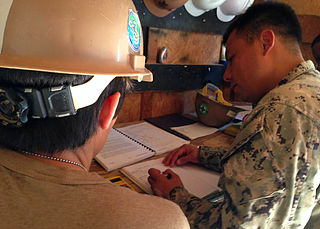 W
WThe business fable of The Chicken and the Pig is about commitment to a project or cause. When producing a dish made of eggs with ham or bacon, the pig provides the ham or bacon which requires his or her sacrifice and the chicken provides the eggs which are not difficult to produce. Thus the pig is really committed to that dish while the chicken is only involved, yet both are needed to produce the dish.
 W
WIdentifying and Managing Project Risk by Tom Kendrick is a book about identifying and managing risks on projects. It was published on April 25, 2003 by American Management Association.
 W
WA Kanban board is one of the tools that can be used to implement Kanban to manage work at a personal or organizational level.
 W
WProject accounting is a type of managerial accounting oriented toward the goals of project management and delivery. It involves tracking, reporting, and analyzing financial results and implications, and sometimes the creation of financial reports designed to track the financial progress of projects; the information generated by this analysis is used to aid project management.
 W
WProject commissioning is the process of assuring that all systems and components of a building or industrial plant are designed, installed, tested, operated, and maintained according to the operational requirements of the owner or final client. A commissioning process may be applied not only to new projects but also to existing units and systems subject to expansion, renovation or revamping.
 W
WA project diary, history, journal or log is a record of a project which is compiled while it is being done.
 W
WThe Project Management Body of Knowledge is a set of standard terminology and guidelines for project management. The body of knowledge evolves over time and is presented in A Guide to the Project Management Body of Knowledge, a book whose sixth edition was released in 2017. The Guide is a document resulting from work overseen by the Project Management Institute (PMI), which offers the CAPM and PMP certifications.
 W
WThe project management triangle is a model of the constraints of project management. While its origins are unclear, it has been used since at least the 1950s. It contends that:The quality of work is constrained by the project's budget, deadlines and scope (features). The project manager can trade between constraints. Changes in one constraint necessitate changes in others to compensate or quality will suffer.
 W
WA project manager is a professional in the field of project management. Project managers have the responsibility of the planning, procurement and execution of a project, in any undertaking that has a defined scope, defined start and a defined finish; regardless of industry. Project managers are first point of contact for any issues or discrepancies arising from within the heads of various departments in an organization before the problem escalates to higher authorities, as project representative.
 W
WA team in this context is defined as "an interdependent collection of individuals who work together towards a common goal and who share responsibility for specific outcomes of their organizations". An additional requirement to the original definition is that "the team is identified as such by those within and outside of the team". As project teams work on specific projects, the first requirement is usually met. In the early stages of a project, the project team may not be recognized as a team, leading to some confusion within the organization. The central characteristic of project teams in modern organizations is the autonomy and flexibility availed in the process or method undertaken to meet their goals.
 W
WRisk management is the identification, evaluation, and prioritization of risks followed by coordinated and economical application of resources to minimize, monitor, and control the probability or impact of unfortunate events or to maximize the realization of opportunities.
 W
WTie Ltd. was a Scottish company which, from May 2002 to August 2011, project-managed large-scale transport projects on behalf of the City of Edinburgh Council in Edinburgh. It was brought in as part of a public-private partnership (PPP) to improve Scottish public transport infrastructure development. Following its management of the controversial Edinburgh Trams project, the company was closed down in 2011.Transport for Edinburgh took over the Edinburgh Trams functions from Tie.
 W
WThe waterfall model is a breakdown of project activities into linear sequential phases, where each phase depends on the deliverables of the previous one and corresponds to a specialisation of tasks. The approach is typical for certain areas of engineering design. In software development, it tends to be among the less iterative and flexible approaches, as progress flows in largely one direction through the phases of conception, initiation, analysis, design, construction, testing, deployment and maintenance.